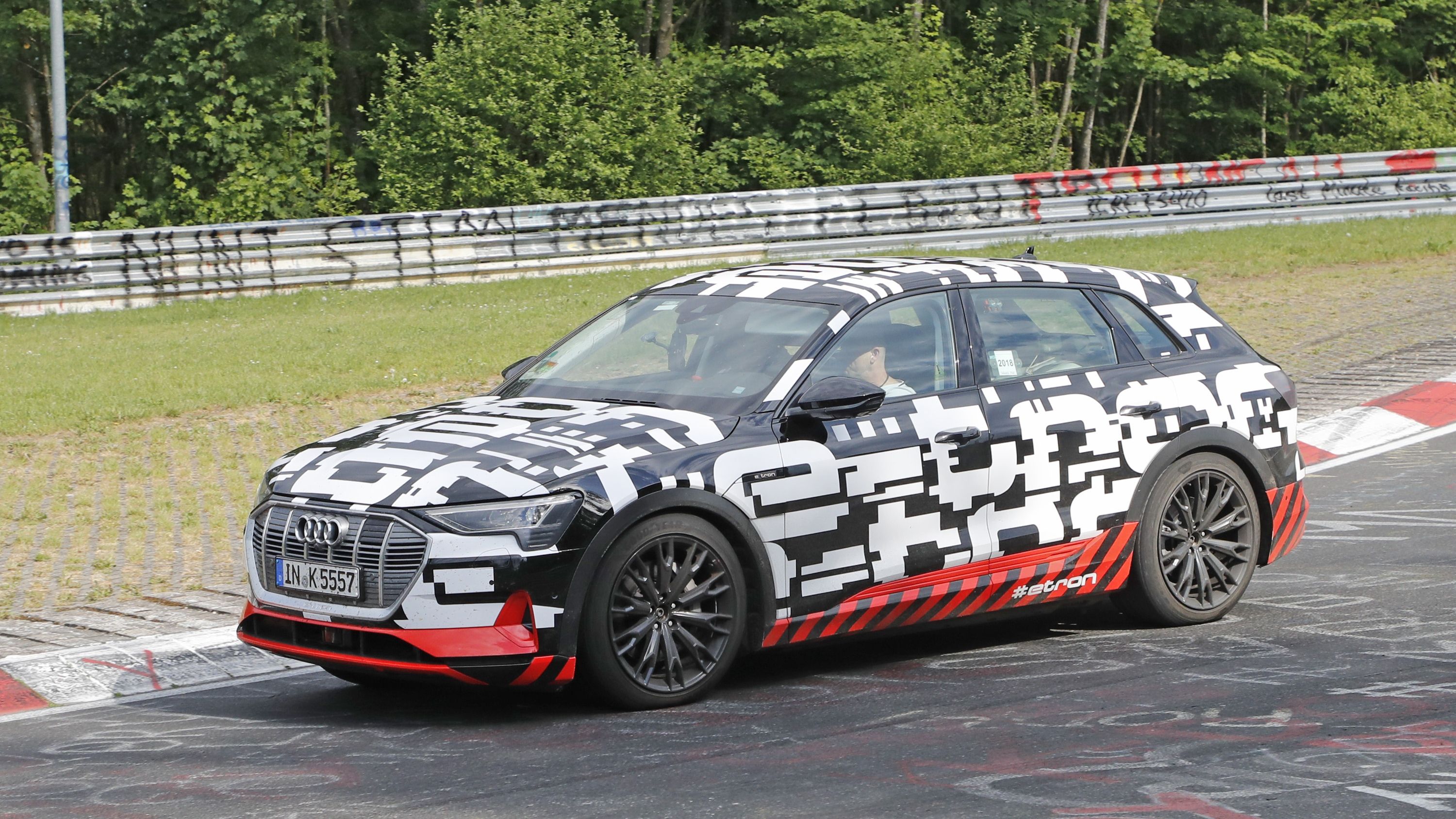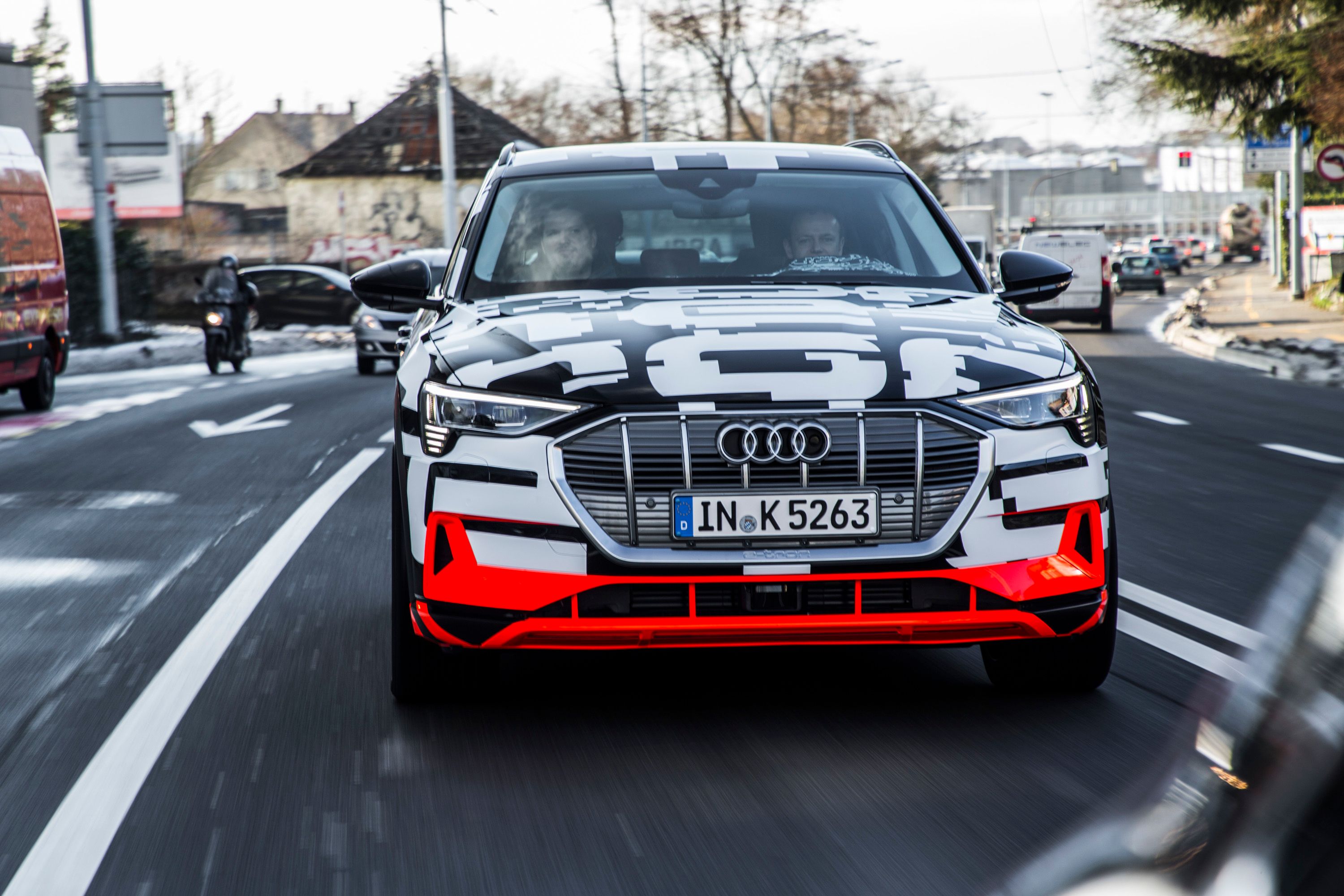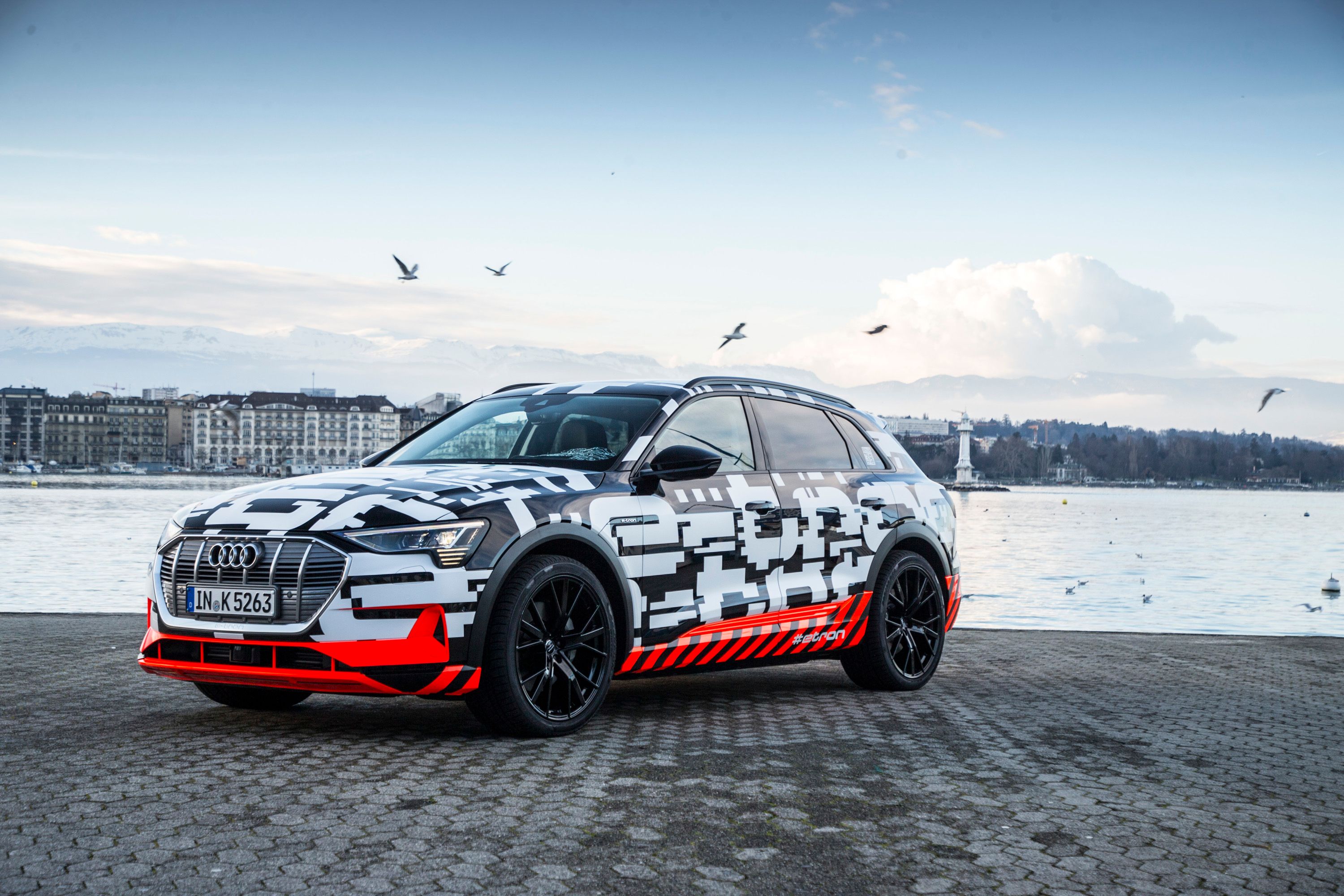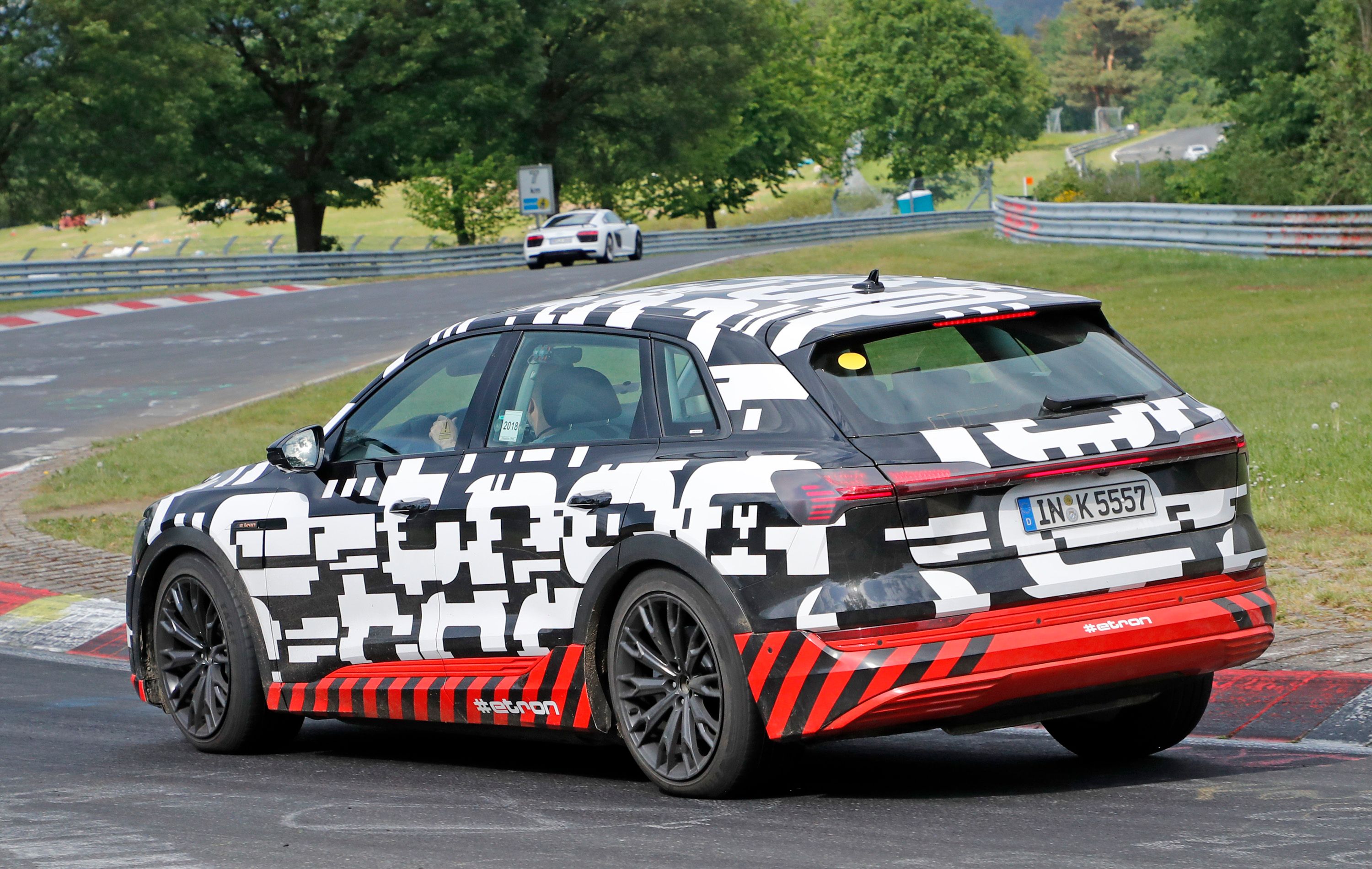We have been waiting for Audi to reveal the new e-Tron Quattro for what seems like a millennium. Audi finally set a date - September 17 - when they will show us an all-electric Audi created to take on the rest of the expensive electric SUVs available on the market. In short, I am talking about the Tesla Model X and the Jaguar I-Pace. With the announcement of the reveal date, Audi also revealed additional information about their new car confirming it will be fast, advanced, and quite efficient.
How Fast is the Audi e-Tron Quattro, really?
Two electric motors with a combined power output of 355 horsepower and 441 pound-feet of torque power the new e-Tron. This Audi is capable of reaching a top speed of 124 mph and accelerating to 62 mph in less than 6 seconds. Not impressed? Well, the e-Tron is able to do this feat several times in a row as the system limits the maximum power output to 60 seconds during which the E-Tron can deliver claimed performance. Furthermore, selecting Sport mode will release additional power from the motors, increasing power output to 402 horsepower and 490 pound-feet of torque for brisk 8 seconds. Honestly, this feels like Audi gave us too many options, but they did it for a reason. The Audi E-Tron should be one of the most efficient electric cars with a range of 248 miles.
Ok, Tesla will say that its Model S will cover more. Jaguar too. Yet, Audi's 248 miles of range is assessed on t Worldwide Harmonized Light Vehicle Test Procedure (WLTP). This testing procedure is far more rigorous than NEDC or any other test cycle for that matter. I am confident that the Tesla Model S can’t achieve the same range as the new E-Tron if tested according to WLTP standards. The I-Pace can. Jaguar already values its range at 292 miles according to WLTP procedures. To put this into perspective, the Jaguar I-Pace's range, according to the NEDC, sits at 336 miles. Obvious disparity. If the Model X 75D can do 259 miles on NEDC, then it should barely manage 220 via WLTP. This is only an assumption. After all, we will have to wait and see.
Nevertheless, 248 miles out of a 95 kWh battery doesn’t seem that shabby, does it?
Yet, this is only half of the story Audi told us about the new E-Tron.
What About That Recuperation Technology Then?
The most impressive technology in the E-Tron will, without any doubt, be its super effective recuperation system. Actually, Audi tested it at Pikes Peak a few months back when the E-Tron drove down the 19-mile course recuperating energy all the way from the top to the bottom. The system recuperated so much energy that it added 19 miles to the total range. In short, driving a mile down the hill can recuperate enough energy to add a mile of range. Astounding. This was achieved via a complex, three-stage recuperation system that “recuperates energy with up to 300 Nm of torque (221.3 lb-ft) and 220 kW of electric power – more than 70 percent of its operating energy input. No series production model has achieved such a value up to now.”
Audi reported that the system contributes to 30 percent of the range.
The Germans crafted three different recuperation modes:
- Manual coasting recuperation using the shift paddles
- Automatic coasting recuperation via the predictive efficiency assist
- Brake recuperation with a smooth transition between electric and hydraulic deceleration.
Honestly, this feels a bit too much for me to explain without some in-depth research, so this is what Audi said about the system:
“The driver can select the degree of coasting recuperation in three stages using the steering wheel paddles. At the lowest stage, the vehicle coasts with no additional drag torque when the driver releases the accelerator pedal. At the highest stage, the electric SUV reduces the speed noticeably – the driver can slow down and accelerate using only the accelerator pedal. This creates the one-pedal feeling. There is no need to use the brake pedal in this deceleration scenario.”
If I understood correctly, at the highest setting, one could basically drive the E-Tron using only one pedal. The car would noticeably decelerate (up to 0.3 G) when the driver lifts the foot off the gas pedal a bit. According to Audi, this covers “over 90 percent of all decelerations.” In short, with a bit of practice, you will not use your brakes nearly as much as in a classic car. Plus, when decelerating, the Audi E-Tron will recuperate energy to provide even more range.
Conclusion
We will see the new Audi E-Tron in all its glory and without any camo on 17th September. The car should mark the beginning of Audi's involvement with the electric car niche. We can already expect an E-Tron GT Sedan (I wouldn’t be surprised if it receives much the same propulsion system as the E-Tron), and even a sports car or a supercar. Maybe one to replace the R8. The E-Tron is an SUV that comes to play in the same ballpark as the Model X, the I-Pace, and the new Mercedes EQ C. All of these cars are slightly different in their appearance, in their layout and size, but they are, whether you like it or not, competitors.
Following the E-Tron unveiling, Audi will most certainly continue to work on the E-Tron Sportback. You know, like a five-door Coupe version of the E-Tron.
Further reading
Read our full speculative review on the 2019 Audi E-tron Quattro.
Read our full review on the 2015 Audi E-Tron Quattro Concept.
Read more Audi news.
Read more technology news.




